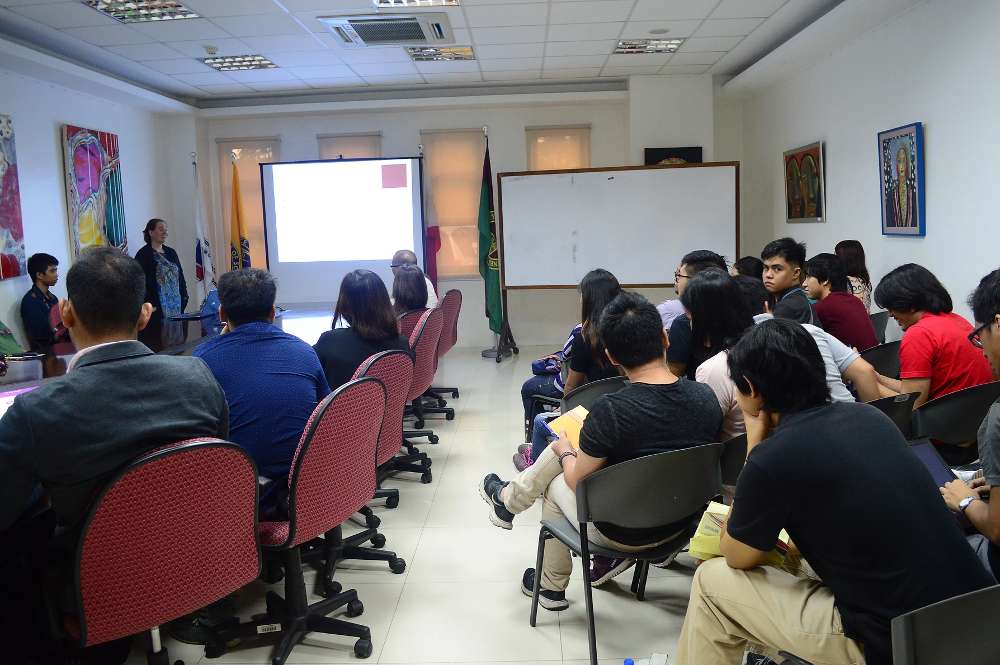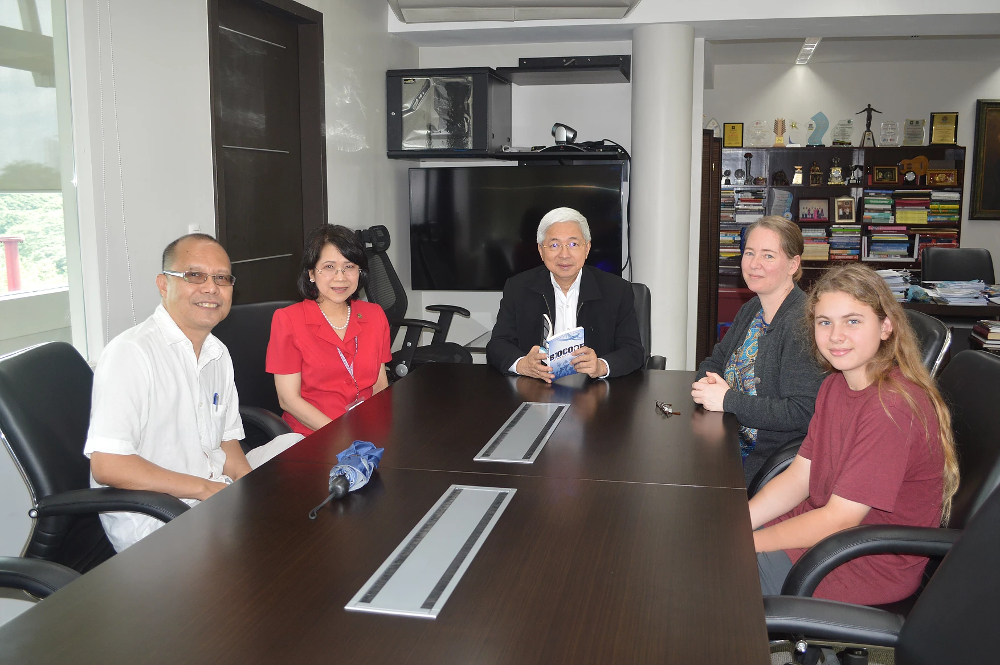By Kamila Isabelle Navarro, 10/14/2016
We’re used to thinking of codes as long strings of seemingly indecipherable characters – languages known to computer programmers. However, there exists another, more significant code found within us and around us: DNA, our planet’s biological code.
This concept of a biological code, or “biocode,” was introduced by Prof. Dawn Field, now a Lamberg International Guest Professor at Göteborg University’s Department of Marine Sciences and co-author of the book Biocode: The New Age of Genomics, published by Oxford University Press. At the weekly seminar held last October 14, 2016 by the Philippine Genome Center, Prof. Field expounded on the importance of studying the biocode and its relevance for mapping biodiversity, especially in known hotspots, like the Philippines.
All life has DNA
Similar to the way source codes are processed by computers, DNA is analyzed through high-throughput machines known as sequencers that
read an organism’s genetic material. The first genome sequenced was the bacterium Haemophilus influenza in 1995. Only eight years later, in 2003, the human genome project was completed, and was quickly heralded as a modern scientific feat.
Despite intense societal focus on the human genome, Prof. Field was quick to emphasize that all life has DNA. “Eukaryotes, all the visible life we can see with our eyes, are a very small aspect of the immense tree of life,” she said. “We should also be interested in microbial life. It’s the invisible majority”

Showing a breakdown of the composition of human genes, Prof. Field pointed out that it has been shown that 37% of our genes originate from bacteria – with a mere 6% of genes evolving within our time as primates. We also have trillions of microbes living in and on our bodies, our microbiome. The Earth likewise has a microbiome and accounts for much of the metabolism of the planet, such as marine microbes producing 50% of the oxygen we breathe. These types of facts lend credence to the idea that “we live in a microbial world.”
“We are all ecosystems – both humans and the earth,” she stressed.
Mapping biodiversity: an inventory of life
Our obsession with our human genome offers a great advantage for studying biodiversity. “If people weren’t so interested in the human genome, we wouldn’t have the cheap, powerful, DNA sequencing technology we have today to apply to studies of biodiversity,” Prof. Field explained.
Her previous research involved mapping marine biodiversity at the Western Channel Observatory, a long-term study site with more than a century of environmental data like sea surface temperature, salinity, and nutrient qualities. In a series of DNA-based studies led by Prof Jack Gilbert of the Argonne National Lab, it was possible to show that microbes at the “L4” study site show seasonal patterns and to use computational models to predict the composition of marine microbes at specific time points during the year. Marine microbial diversity consistently peaked during winters, and dipped during summers — on the solstice. This discovery led to the international Ocean Sampling Day initiative, which works to collect marine microbial samples from around the world on the solstices.
Work at L4 led to the founding of the Genomic Observatories (GOs) Network with Neil Davies, of Berkeley, the co-author of the book Biocode. He led an even more ambitious project, not to just characterize ‘a bucket of water’ but an entire ecosystem, the island of Moorea, a volcanic oceanic island near Tahiti, in French Polynesia.
The Moorea Biocode project has generated the DNA barcodes, or ‘DNA name’, of every species (>1 mm) on the island, from coral reefs to forests. This data is now being incorporated into a digital model of the island, along with the island’s other physical, chemical and biological data.
Known as the Island Digital Ecosystem Avatars (IDEA) Project, this pilot study is now being replicated in other locations including Crete and Sweden, where Prof Field will now be working.
It is hoped that such digital ecosystems can be used to predict ecological impact in response to future scenarios.

Prof Field ended her talk opening up the possibility that the Philippines, as hot spot of biodiversity, might also consider joining the consortium.
With the advent of genomics in the Filipino research community, more than 26,000 endemic species, an alarming susceptibility to natural disasters and the usefulness of ecosystem models to scientists and policy makers alike, the PGC hopes Prof. Field’s vision may soon become reality.

REFERENCES
- Fleischmann, R. D. et al (1995). Whole-genome random sequencing and assembly of Haemophilus influenza Rd. Science. 269 (5223):496-512.
- National Human Genome Research Institute (2003). International Consortium Completes Human Genome Project. Retrieved from https://www.genome.gov/11006929/
- McFall-Ngai, M. et al (2013). Animals in a bacterial world, a new imperative for the life sciences. Proceedings of the National Academy of Sciences of the United States of America 110(9): 3229-3236.
- Gilbert, J. A. et al (2010). Metagenomes and metatranscriptomes from the L4 long-term coastal monitoring station in the Western English Channel. Standards in Genomic Sciences 3(2): 183-193.
- Davies, N. et al (2012). Sequencing data: a genomic network to monitor Earth. Nature 481(145).
- Nave, K. (2015). This tropical paradise might save the planet. Wired. Retrieved from
- Cressey, D. (2015). Tropical paradise inspires virtual ecology lab. Nature 517: 255-256.
- Biodiversity Management Bureau. (2014). Status of Philippine Biodiversity. Retrieved from http://www.bmb.gov.ph/index.php/mainmenu-publications/statistics/doc_download/724-status-of-philippine-biodiversity
